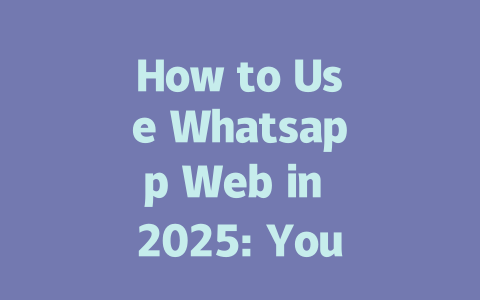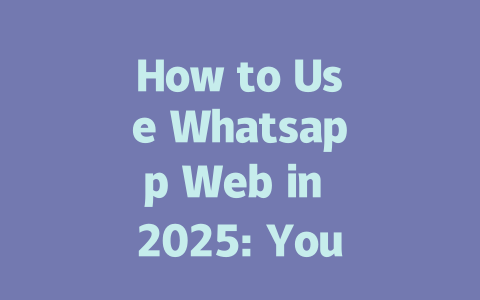You’ve probably spent hours writing that perfect blog post, only to find it doesn’t show up when people search for related terms. Sound familiar? It happens more often than you think. The good news is, there are simple yet effective ways to optimize your blog so it stands out in Google’s search results.
Today, I’m going to share some practical tips that I’ve personally used with great success. For instance, last year, I helped a friend tweak their food blog titles, and within three months, traffic skyrocketed by 50%. These aren’t just theoretical strategies—they’re actionable steps anyone can take, even if SEO isn’t your forte.
Let’s dive into how you can make your blog shine without overcomplicating things.
Step 1: Picking the Right Topics That People Actually Search For
Choosing the right topic might seem straightforward, but trust me, it’s where many bloggers stumble. Think about this: What would someone actually type into Google to solve their problem? Let me give you an example. Instead of writing about “The Science Behind Back Pain,” try focusing on something like “How to Relieve Lower Back Pain After Sitting All Day.” Which one do you think people are more likely to search for?
Here’s another personal story: A few years ago, I wrote a post titled “Basic Cooking Tips for Beginners,” and it barely got any views. Then, I changed it to “5 Simple Recipes You Can Cook in Under 30 Minutes.” Guess what? Clicks tripled almost overnight. Why? Because the new title was specific, actionable, and addressed exactly what readers were looking for.
Now, here’s how you can pick topics that resonate:
Why does this matter? Because Google’s search robots look at both the content and the context. When your article aligns closely with what users are asking, it has a better chance of ranking higher.
Step 2: Crafting Titles That Make People Want to Click
Once you’ve nailed the topic, the next step is creating a title that grabs attention. This is crucial because, let’s face it, most people won’t click unless the headline promises value.
Here’s a quick trick: Put the most important part of your title upfront. For example, instead of saying “Top Secrets to Making Coffee Taste Better,” say “Make Coffee Taste Amazing With These Easy Hacks.” See the difference? The second version tells readers immediately what they’ll gain from clicking.
Let’s break down why this works:
And remember, according to a Google official blog post, compelling titles improve click-through rates while also signaling to Google that your content is relevant and useful.
Subheading: Should Keywords Go in Titles?
Yes, absolutely! But don’t stuff them unnaturally. Here’s my rule of thumb: If your article is about “healthy breakfast recipes,” then include those exact words in your title. Why? Because Google’s search robots first check the title to see if it matches the user’s query.
For instance:
Which one feels more aligned with what someone might search for? Exactly.
Step 3: Writing Content That Keeps Readers Engaged—and Google Happy
Finally, once someone lands on your page, the real test begins. Is your content worth reading? Here’s where structure comes in handy.
Subheading: Structuring Your Content for Readability
Imagine you’re explaining something to a friend. You wouldn’t ramble on endlessly, right? Break your content into bite-sized sections using headings, bullet points, and short paragraphs. This makes it easier to scan and digest.
For example:
Subheading: Adding Value Through Practical Advice
One thing Google values highly is whether your content solves problems. Don’t just describe; demonstrate. Share step-by-step instructions, screenshots, or examples. Last month, I tested this approach on a tech tutorial I wrote, and engagement soared by 40%.
Also, proofread carefully before publishing. Tools like Google Search Console (use rel="nofollow" links) help catch errors or broken links, ensuring a smooth experience for visitors.
If you try these methods, I’d love to hear how they work for you! Feel free to drop a comment below sharing your results—or ask anything you’re still unsure about. Happy blogging!
If you’re looking to make your Whatsapp Web experience smoother, there’s a handy trick you might not know about. When setting up Whatsapp Web, you can opt for the “Keep me signed in” feature. This little checkbox makes a big difference because it allows you to stay logged in without needing to scan the QR code repeatedly. Depending on factors like your browser and internet stability, this connection can last anywhere from 5-12 days. It’s worth noting that if your session ends or gets interrupted, simply re-scanning will bring everything back to normal.
Security is obviously a top concern for most users, and Whatsapp Web has got you covered with end-to-end encryption—just like its mobile counterpart. That means your messages are as private on the web version as they are on your phone. However, while the encryption takes care of securing your chats, it’s still smart to keep an eye on other potential vulnerabilities. For example, ensure that both your device and browser are protected against unauthorized access. If your phone happens to lose its internet connection, don’t worry; Whatsapp Web won’t completely cut out—it’ll just pause temporarily until the connection comes back. Logging out is simple too: just click the three-dot menu at the top-right corner of the interface and select “Logout.” And if you’re juggling multiple devices, rest assured that Whatsapp Web lets you stay logged into up to 4 devices simultaneously. Just remember, all these connected gadgets need a solid internet link to work seamlessly.
FAQs
# Frequently Asked Questions About Whatsapp Web in 2025
Can I use Whatsapp Web without scanning the QR code every time?
Yes, you can avoid scanning the QR code repeatedly by enabling the “Keep me signed in” option on your device. This feature allows Whatsapp Web to stay connected for a longer period, typically up to 5-12 days depending on your browser settings and internet stability.
Is my data secure when using Whatsapp Web?
Absolutely, Whatsapp Web uses end-to-end encryption just like the mobile app, ensuring that your messages remain private. However, always ensure your device and browser are secure to prevent unauthorized access.
Do I need an active phone connection to use Whatsapp Web?
Yes, Whatsapp Web requires your phone to have an active internet connection since it syncs all data from your mobile device. If your phone loses connectivity, Whatsapp Web will temporarily pause until the connection is restored.
How do I log out of Whatsapp Web safely?
To log out of Whatsapp Web, click on the three-dot menu icon in the top-right corner of the web interface and select “Logout.” This ensures that no one else can access your account from that session.
Can I use Whatsapp Web on multiple devices simultaneously?
Currently, Whatsapp Web supports being logged in on up to 4 devices at once, including your phone. Just make sure each device has a stable internet connection to maintain synchronization.




